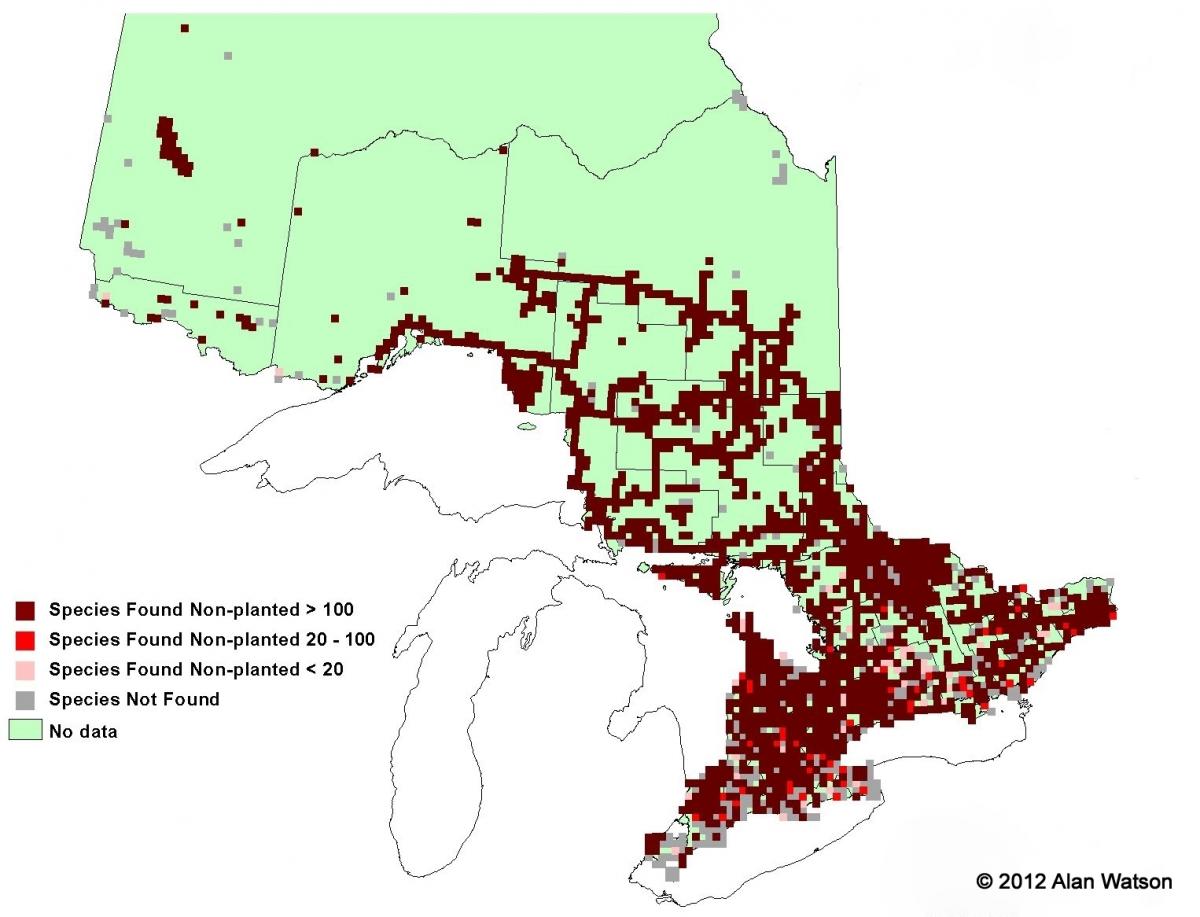trembling aspen
trembling aspen - Populus tremuloides
Trembling aspen are fast-growing, medium-sized trees. They are known for their ability to grow in poor, burnt, and recently disturbed soil, making them an important forest succession tree. Trembling aspen often appear as pure stands, partly because they spread out underground, forming clonal colonies of the parent tree. New suckers emerge as the oldest trees decline, so trembling aspens are always moving, and can be much older than they appear (a famous colony in Utah is dated at over 80 000 years!). Trembling aspen don't appreciate shade, over time, conifers and broadleaf tree species can move in and overtake them. Mature seed catkins split open, revealing seeds with tufts of silky white strands.
Photo by Sean Fox.
This tree's namesake comes from the long, flattened stalks at the base of their leaves, which allow the leaves to flutter or "tremble" in the slightest of wind. Leaves are broadly oval-shaped with a fine-toothed margin and a short, sharp tip.
Photo by Sean Fox.
Young trembling aspen have smooth, pale bark that darkens and cracks with age.
Photos by Chris Earley and Sean Fox
Buds are 5-7mm long, with a shiny reddish-brown appearance.
Photo by Sean Fox.

Ontario Tree Atlas map of non-planted Trembling Aspen. 1995-1999.
References
Farrar, J.L.. 1995. Trees in Canada. Fitzhenry & Whiteside Ltd. Toronto. ON. 504 pp.
Kershaw, L. 2001. Trees in Ontario: Including tall shrubs. Lone Pine Publishing. Edmonton. AB. 240 pp
Muma, W. 2011. Ontario Trees and Shrubs. [Online] Available: www.ontariotrees.com
OMNR, 2011. Ontario Ministry of Natural Resources: Ontario Tree Atlas. [Online] Available: http://www.mnr.gov.on.ca/en/Business/ClimateChange/2ColumnSubPage/267027.html
OMNR, 2008. Ontario’s Biodiversity: Species at Risk.